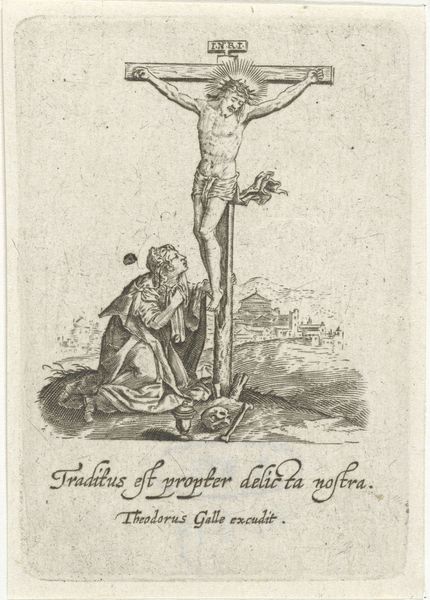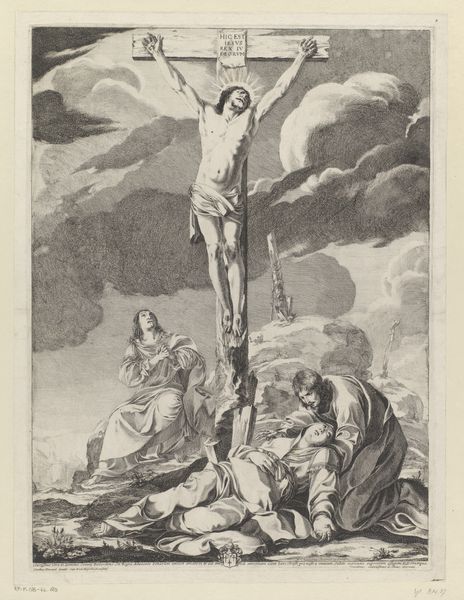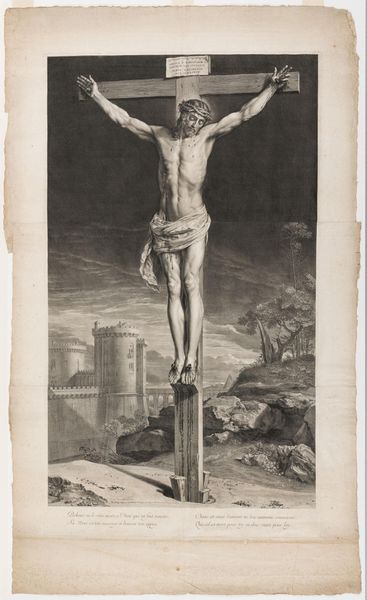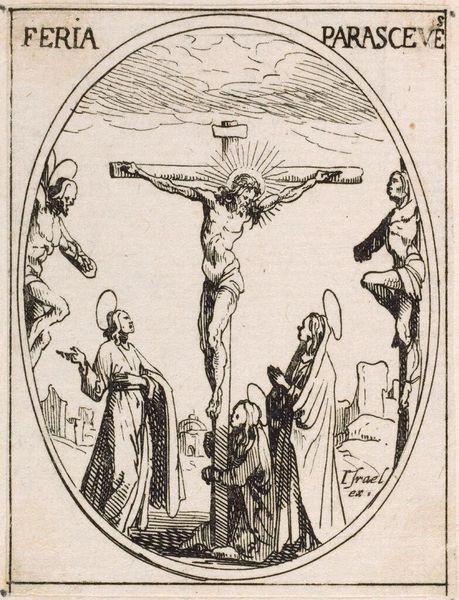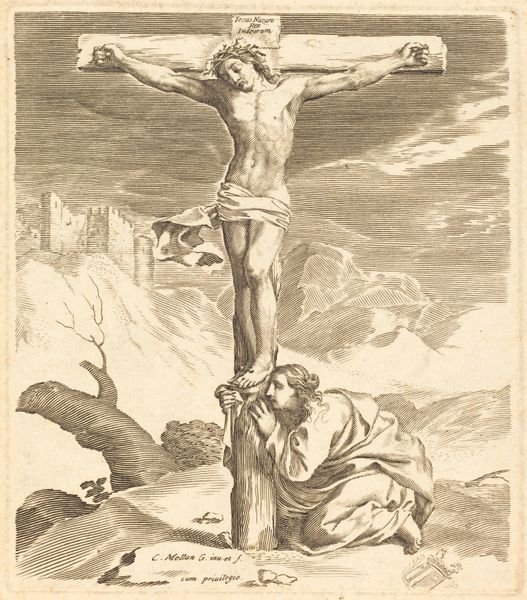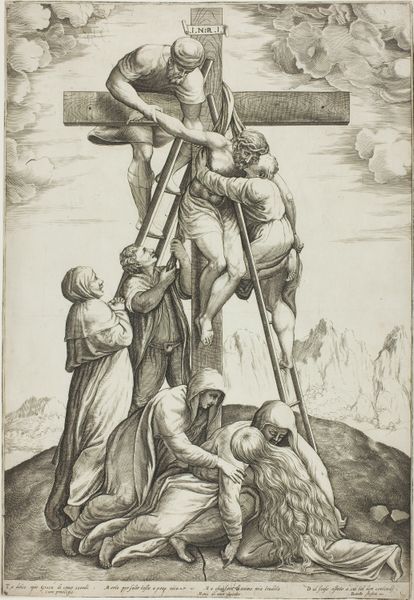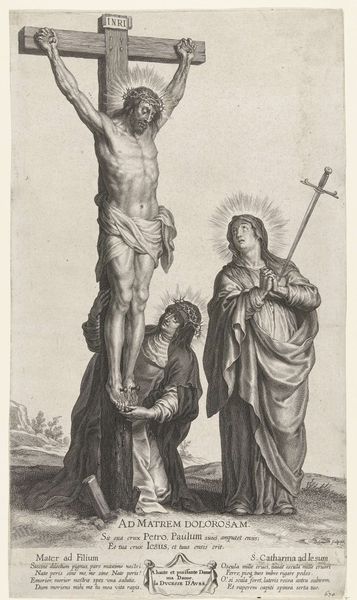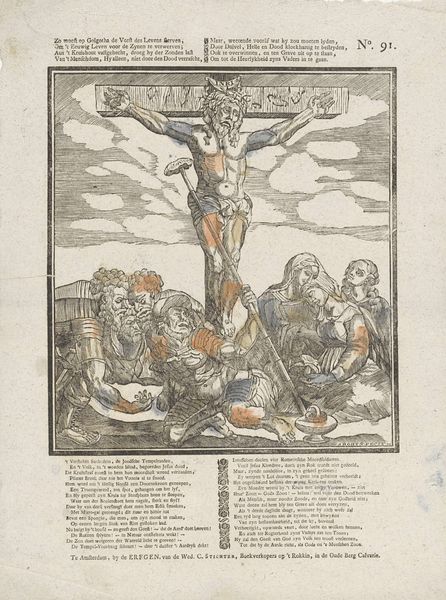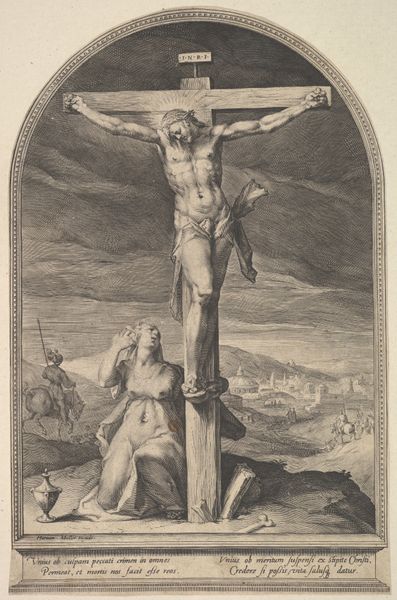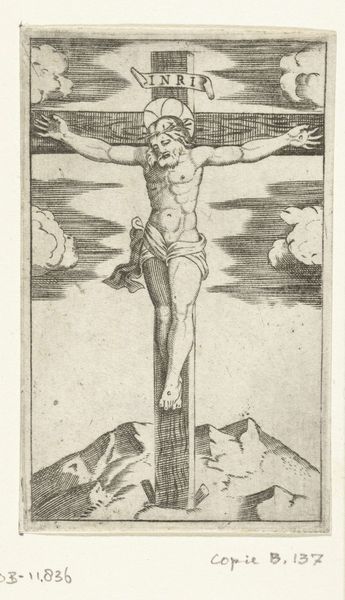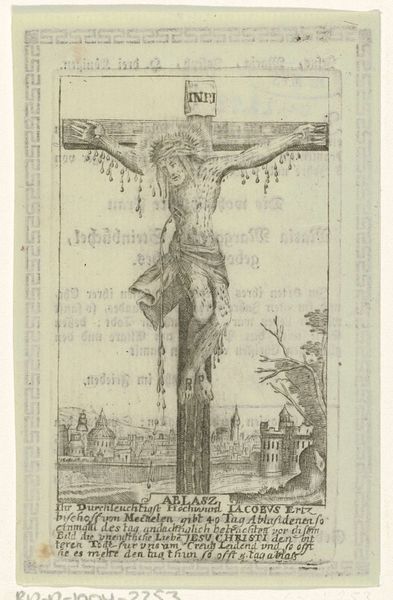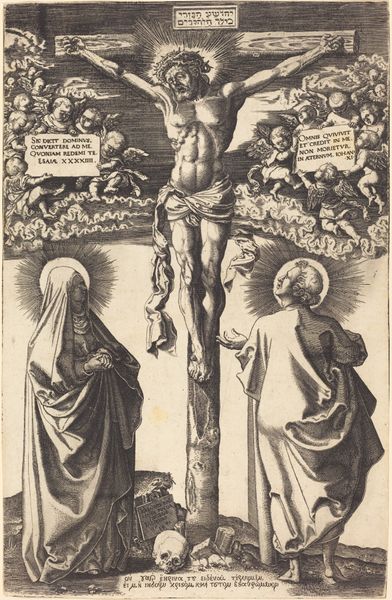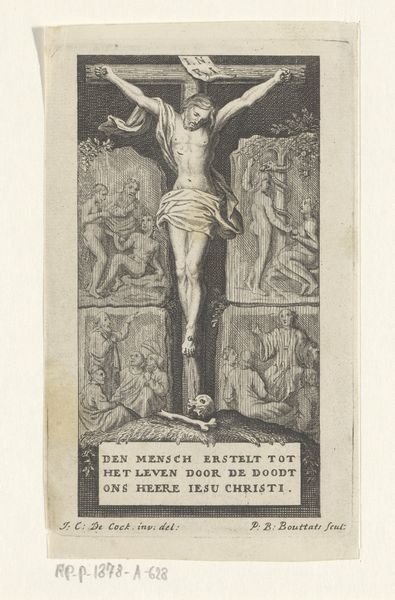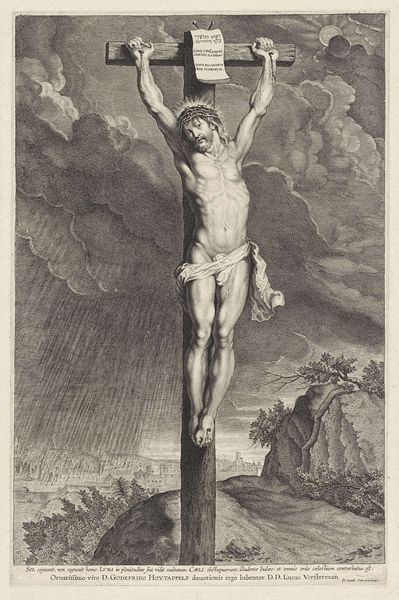
print, engraving
#
aged paper
#
baroque
# print
#
old engraving style
#
landscape
#
figuration
#
personal sketchbook
#
sketchbook drawing
#
history-painting
#
sketchbook art
#
engraving
Dimensions: height 294 mm, width 212 mm
Copyright: Rijks Museum: Open Domain
Curator: Look at the stark vulnerability depicted in this 17th-century engraving by Aegidius van Schoor, titled "Wonderbaarlijke leliewortel met de vorm van een kruisbeeld," or "Miraculous Lily Root in the Shape of a Crucifix." Editor: My initial impression is one of rather gruesome beauty, isn’t it? The distorted figure nailed to the suggestive tree trunk contrasted with that pristine lily...it's unsettling yet captivating in its stark simplicity. Curator: Indeed. And that contrast becomes even more pronounced when we understand the engraving’s themes. Notice the prominent inscriptions surrounding the central image? The text commemorates the finding of a cross-shaped root on Mount Calvary, supposedly giving rise to a miraculous lily in 1460. We should also consider its location—within a cloister. Editor: Yes, that location seems critical. It raises questions of religious authority and power. Was Van Schoor commissioned by the Church to represent this miracle to reinforce a certain worldview and promote a particular spiritual agenda? It is the means of ideological production being shown, to borrow from Marxist terms. Curator: It does invite such a reading. But let's also consider this imagery within broader contemporary gender narratives and constructions. Who gets to be seen as the subject of miracles, whose body gets displayed, and what do we make of the juxtaposition of apparent power in religious doctrine versus the reality of marginalization on display in the work's materiality and aging aesthetic? Editor: Interesting. When I look at this, the actual making comes forward as more crucial than a lot of those symbolic interpretations. Engravings such as this would require meticulous craftwork. Notice the precision of the lines, the shading – each detail speaking to hours of labor to bring the image into being? What's presented is clearly idealized in that cross shape from a lily, even as its base process involved skilled artisans engaged in specific social circumstances. Curator: A valuable reminder not to abstract too far from tangible reality. Both the labor invested in crafting the print and how the image engages in social production play an important part in forming the work's aura. Editor: Precisely. Bringing those production means back into focus helps destabilize a strictly spiritual reading. Curator: Absolutely, understanding not just *what* is depicted, but *how* and *why* is crucial when encountering such historically freighted imagery. Editor: To reconsider those means as essential, the making. Thank you, and goodbye.
Comments
No comments
Be the first to comment and join the conversation on the ultimate creative platform.
